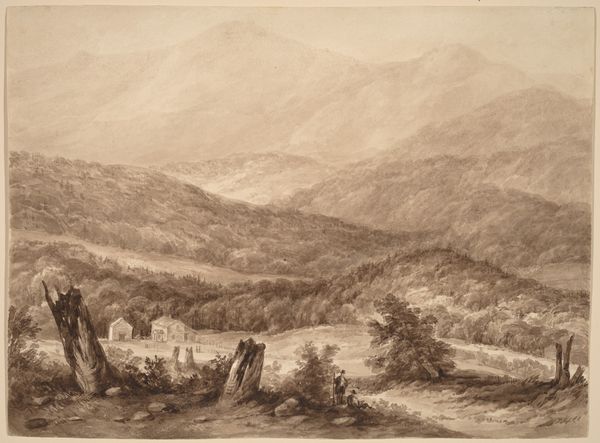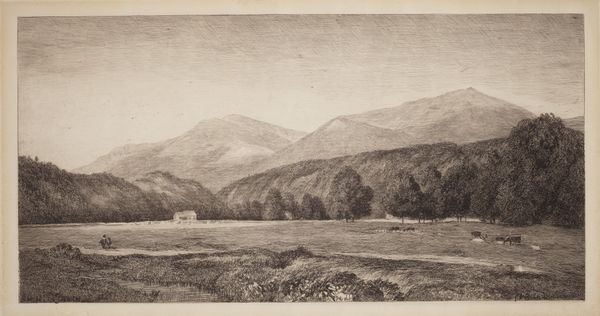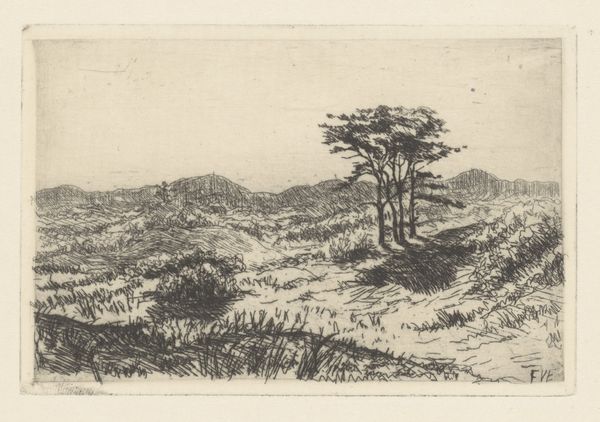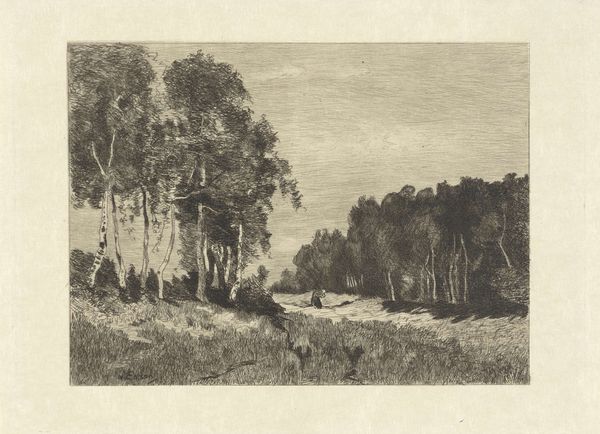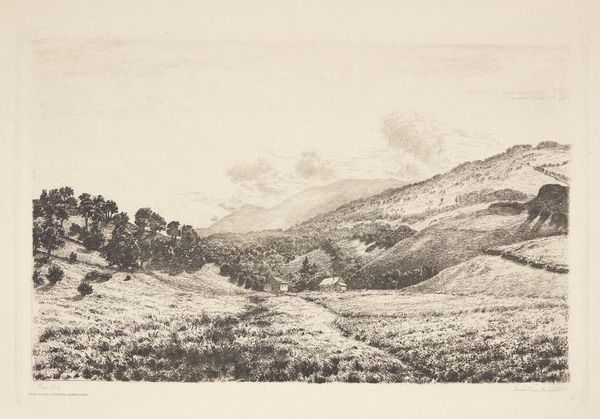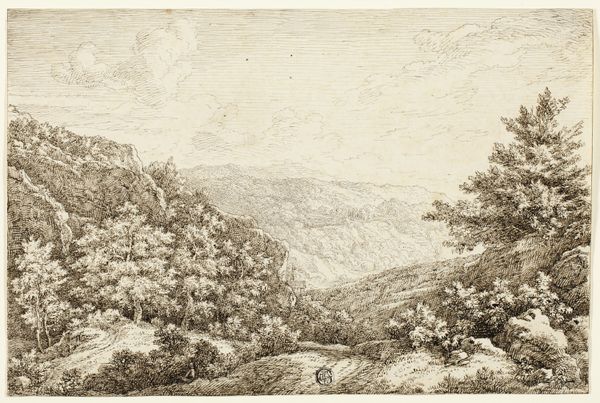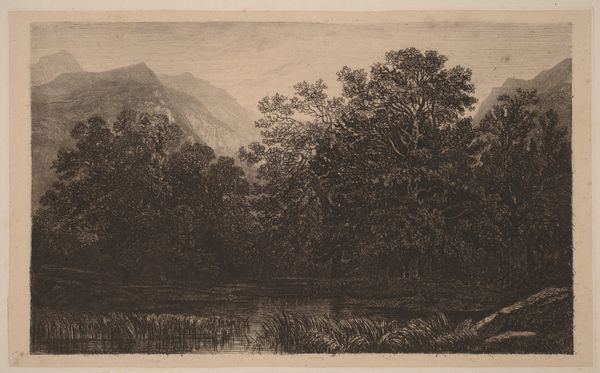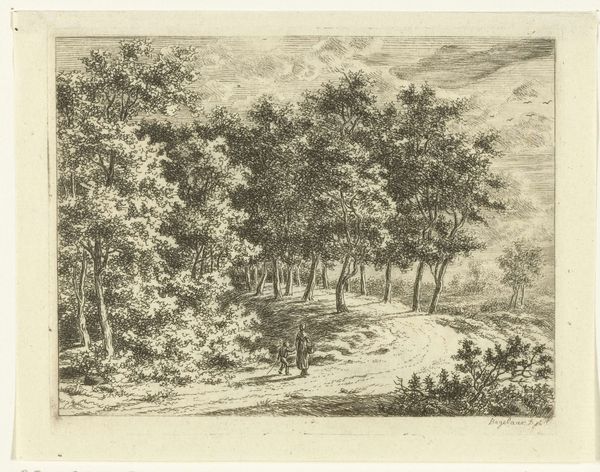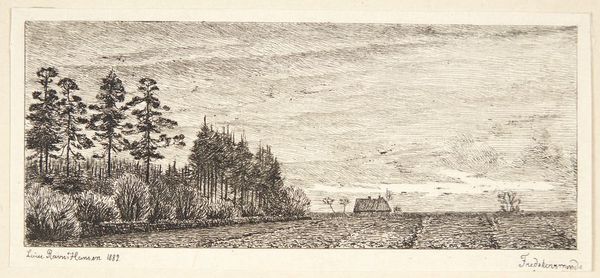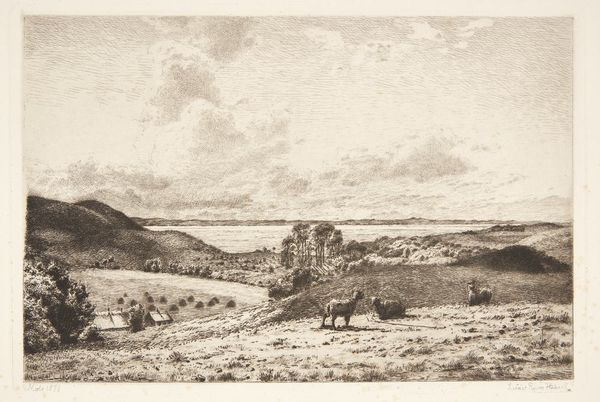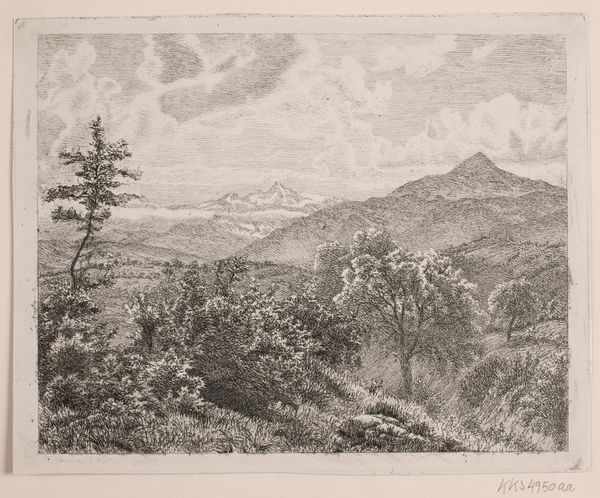
Dimensions: 207 mm (height) x 398 mm (width) (plademål)
Art Historian: We’re looking at Louise Ravn-Hansen’s 1905 etching, "Skovrig skr\u00e6nt ned mod s\u00f8en," or "Wooded Slope Towards the Lake," housed at the SMK, Statens Museum for Kunst. Curator: It's remarkable. A symphony in sepia. The textures! I'm immediately drawn to the layering of the landscape and the density of those marks creating depth, light and shadow. Art Historian: Ravn-Hansen was deeply involved with plein-air painting, and printmaking offered her a portable method to capture these intimate landscapes on the go. It’s a reflection of the broader movement towards artistic independence at the turn of the century. Curator: Indeed. Look at how she's handled the perspective. The subtle recession of space through variation in line weight; that area where the trees cluster and become more vague as it approaches the horizon. The artist manipulates these forms and densities to trick our eyes. Art Historian: And considering the social context, Ravn-Hansen being a woman artist gaining recognition at the time highlights the shift in gender dynamics within the Danish art world. Curator: Absolutely, and the material itself-- the etching— adds so much to this. The fine, crisp lines almost vibrating against each other give it the airy yet detailed sense of observation. Art Historian: She really harnessed etching's ability to render details which resonates with Impressionist landscape painters like, Pissarro. She translated those ideals of immediate experience and careful documentation of nature into the print medium. This piece offers a serene vision in response to increased urbanization. Curator: The overall composition does encourage contemplation. There's almost a musical quality as each compositional aspect transitions, creating tonal variation through linear structures that makes the piece feel like gazing at it during sunset or sunrise. The atmospheric qualities she’s harnessed using pure graphic means are profound. Art Historian: And thinking about where this work sits today—in the collection of the Statens Museum for Kunst, it serves as an important historical record of a specific landscape and moment in time, but also tells us much about the cultural values assigned to nature and art making within early 20th-century Danish society. Curator: It's so subtle but incredibly refined and carefully thought through. Art Historian: Examining it through a historical lens offers crucial context for our understanding. Curator: And purely from its formal achievements. A treasure of etched line.
Comments
No comments
Be the first to comment and join the conversation on the ultimate creative platform.

